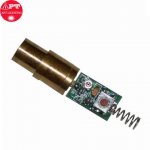D
Deleted member 46822
Guest
A bit late on this reply but I will say these atplightingworld modules didn't disappoint me. paul has set me up with one of his older stock ones and it metered at 192mw. He set it up nicely with a sinked driver and custom soldered it to my tastes for easy use. I don't have a steady hand and soldering is a hassle for me. They do get hot as he said as expected so they do need some diode heat sinking. As he said he can't vouch for the new ones.
At $60 a pop for a new one I can't say I would order many more as with fastech's at $6
Pman has given me a number of these fastech's and iv'e bought quite a few but he has taught me all the tricks for max output durability and has seen up to 150mw. Can't tell you about IR but i'm guessing its the usual 20% average as been said.
At $60 a pop for a new one I can't say I would order many more as with fastech's at $6
Pman has given me a number of these fastech's and iv'e bought quite a few but he has taught me all the tricks for max output durability and has seen up to 150mw. Can't tell you about IR but i'm guessing its the usual 20% average as been said.
Last edited by a moderator:




